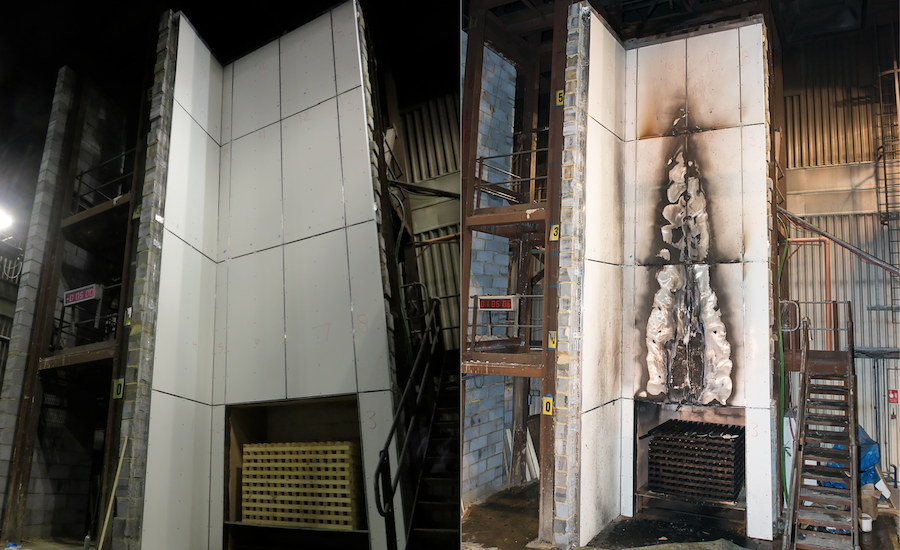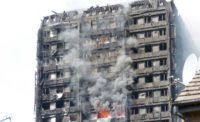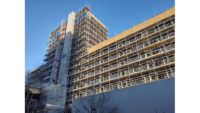Fire tests prompted by the June 14 fire that caused at least 80 known deaths at London's 24-story Grenfell Tower suggest that 82 apartment blocks around the U.K. have external aluminum cladding systems that do not comply with current building regulations.
The government made this announcement following the first of six tests on full-scale cladding systems that now are commonly used throughout the country.
Owners of such buildings must "seek professional advice about any necessary remedial work," urges the Independent Expert Advisory Panel set up by the U.K. government's Dept. for Communities and Local Government.
The first test panel included a rainscreen of aluminum composite material containing polyethylene filler backed by a 10-centimeter-thick rigid polyisocyanuate-foam insulation, with fire breaks and barriers in the 5-cm intervening void. This combination is similar to the one fitted last year to the exterior of the Grenfell Tower, where it caused flames to spread rapidly, overwhelming rescue efforts.
Owners of such buildings must "seek professional advice about any necessary remedial work," urges the Independent Expert Advisory Panel set up by the U.K. government's Dept. for Communities and Local Government.
According to investigators, the Grenfell fire was sparked by a faulty refrigerator in a fourth-floor kitchen, with flames breaking out of a window and igniting surrounding cladding.
This scenario is being replicated on 9-meter-tall complete cladding sections at a large rig operated by BRE Global Ltd., Watford.
The firm will test six sample systems using composite aluminum panels with fillers of unmodified polyethylene, fire-retardant polyethylene and limited-combustibility mineral. Each system will be tested with two types of insulation: rigid polyisocyanurate foam and stone wool.
BRE's current investigation follows more-limited tests, focusing on the filler material used in the aluminum rain screen that the department ordered after the fire. The tests resulted in a 100% failure rate, but the testing regime was criticized for failing to consider all cladding system elements.
While tests and police investigations continue, the government-appointed former Judge Martin Moore-Bick is preparing to begin a public inquiry into causes of the Grenfell fire.
The government also has launched a review of relevant building regulations.
In parallel, the Institution of Civil Engineers has named Peter Hansford, chair of construction and infrastructure policy at University College London's Bartlett School of Construction and Project Management, to investigate systemic aspects of the Grenfell fire.
These include the chain of responsibility, whole-life quality assurance and procurement practices.





Post a comment to this article
Report Abusive Comment